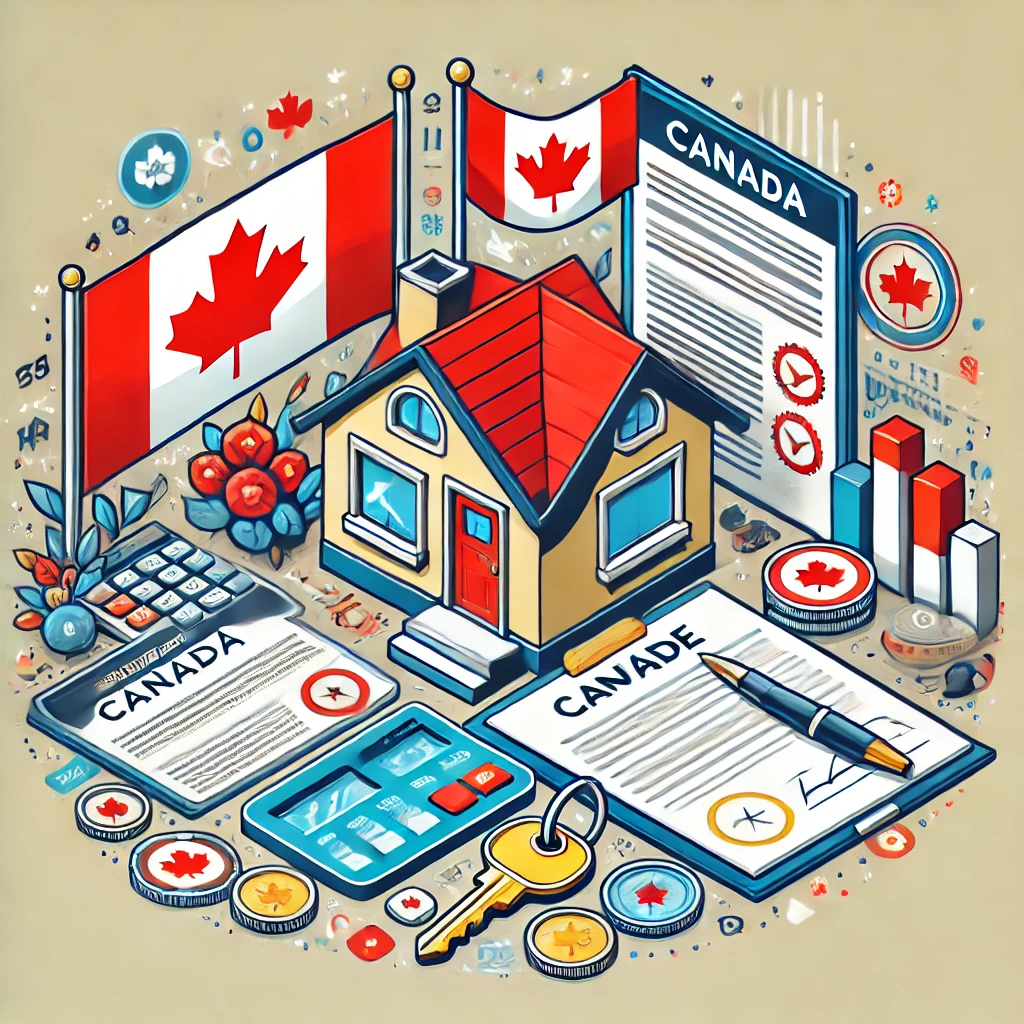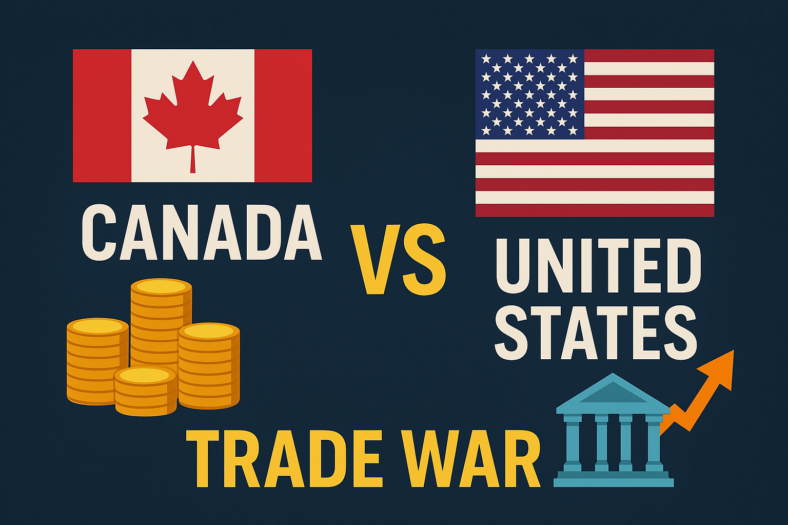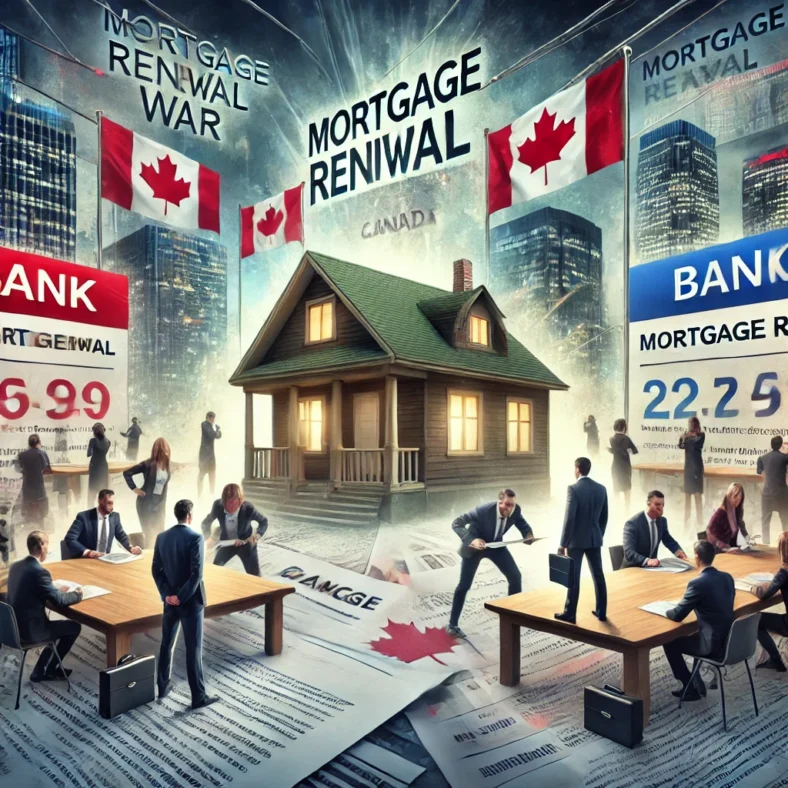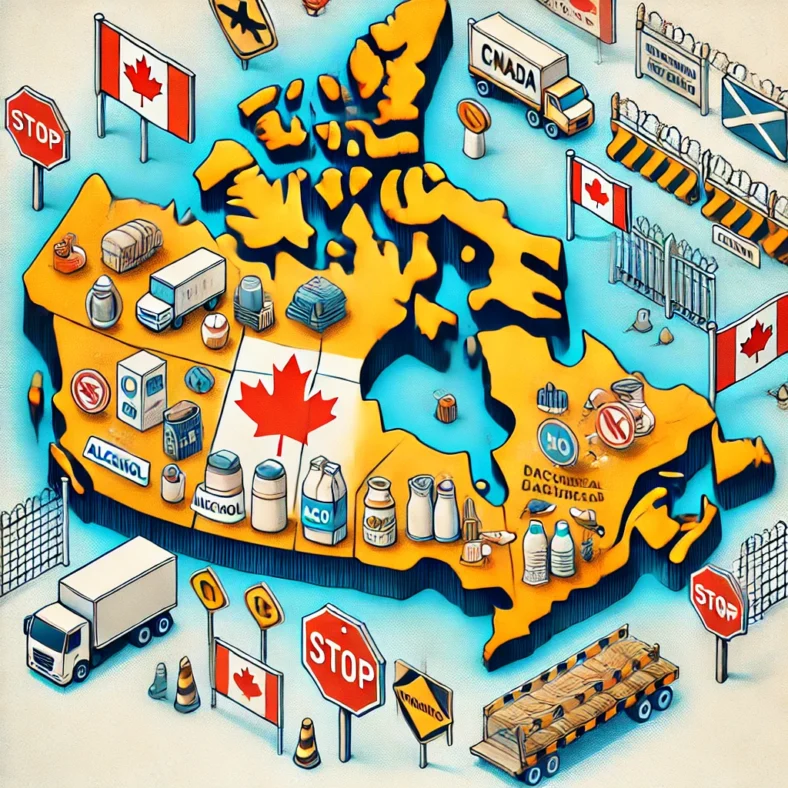Purchasing your first home is an exciting milestone, but it can also be overwhelming, especially when it comes to understanding mortgages. As a first-time homebuyer, navigating the complexities of securing a mortgage can seem daunting. Still, with the right information and guidance, you can make informed decisions that suit your financial situation and long-term goals. In this comprehensive guide, we’ll cover everything you need to know about first-time homebuyers’ mortgages, including the mortgage stress test, the pre-approval process, and tips for securing the best mortgage rates in Canada.Understanding Mortgages for First-Time Home Buyers
For first-time homebuyers, a mortgage is typically the largest financial commitment they will make. A mortgage is a loan specifically used to purchase real estate, and the property itself secures it. Understanding the different types of mortgages and how they work is crucial to making an informed decision.
Fixed-Rate vs. Variable-Rate Mortgages
There are two main types of mortgages available to first-time homebuyers in Canada: fixed-rate and variable-rate mortgages.
- Fixed-Rate Mortgage: With a fixed-rate mortgage, your interest rate remains the same for the entire term of the mortgage. This provides stability and predictability in your monthly payments, making it easier to budget. Fixed-rate mortgages are ideal for those who prefer financial certainty and want to avoid the risk of fluctuating interest rates.
- Variable-Rate Mortgage: A variable-rate mortgage, on the other hand, has an interest rate that can fluctuate based on changes in the prime lending rate. While the initial interest rate on a variable-rate mortgage is often lower than that of a fixed-rate mortgage, it can increase or decrease over time. This type of mortgage is suitable for those who are comfortable with the potential for variable payments and want to take advantage of lower initial rates.
First Time Home Buyers Mortgage Programs in Canada
To help first-time homebuyers get into the market, the Canadian government offers several programs and incentives designed to make homeownership more affordable. Understanding these programs can provide significant savings and make it easier to qualify for a mortgage.
First-Time Home Buyer Incentive
The First-Time Home Buyer Incentive is a shared-equity mortgage program offered by the Canadian government. It allows eligible first-time homebuyers to finance a portion of their home purchase through a shared equity mortgage with the government, which can reduce the amount of money they need to borrow and lower their monthly mortgage payments.
Under this program, the government contributes 5% of the purchase price for an existing home or 10% for a new construction home. In return, the government shares in the appreciation or depreciation of the home’s value when it is sold or after 25 years, whichever comes first.
Home Buyers’ Plan (HBP)
The Home Buyers’ Plan (HBP) allows first-time homebuyers to withdraw up to $35,000 from their Registered Retirement Savings Plan (RRSP) to use towards the purchase of their home. The amount withdrawn is not subject to income tax, provided it is repaid within 15 years. The HBP is an excellent option for those who have been saving for retirement but want to use those funds to buy their first home.
First-Time Home Buyers’ Tax Credit
The First-Time Home Buyers’ Tax Credit is a non-refundable tax credit that provides eligible first-time homebuyers with a $5,000 tax credit, resulting in a rebate of up to $750. This credit helps offset some of the costs associated with purchasing a home, such as legal fees, home inspections, and other closing costs.
The Mortgage Stress Test: What You Need to Know
One of the most important considerations for first-time homebuyers is the mortgage stress test. Introduced by the Office of the Superintendent of Financial Institutions (OSFI), the mortgage stress test is designed to ensure that borrowers can still afford their mortgage payments if interest rates rise in the future.
How the Mortgage Stress Test Works
The mortgage stress test requires lenders to assess whether borrowers can afford their mortgage payments based on a qualifying interest rate that is typically higher than their actual mortgage rate. As of June 2021, the qualifying rate is the greater of 5.25% or your mortgage contract rate plus 2%. This means that even if you qualify for a mortgage at a lower interest rate, you must prove that you can afford the payments at the higher stress test rate.
This test is applied to all new mortgage applications, including renewals and refinancing, and it has a significant impact on how much you can borrow. For first-time homebuyers, it’s essential to understand the implications of the stress test and how it may affect your home-buying budget.
Mortgage Pre-Approval for First Time Home Buyers
Getting pre-approved for a mortgage is an essential step for first-time homebuyers. A mortgage pre-approval provides you with a clear understanding of how much you can borrow, your interest rate, and what your monthly payments will be. It also demonstrates to sellers that you are a serious buyer, which can be an advantage in a competitive housing market.
How to Get Pre-Approved for a Mortgage
The mortgage pre-approval process involves providing your lender with information about your income, employment, credit history, and debts. Based on this information, the lender will determine how much you can afford to borrow and provide you with a pre-approval letter.
Here are the steps to get pre-approved for a mortgage:
- Check Your Credit Score: Before applying for pre-approval, check your credit score to ensure it’s in good shape. A higher credit score can improve your chances of getting pre-approved at a lower interest rate.
- Gather Documentation: You’ll need to provide documentation such as pay stubs, tax returns, and bank statements to verify your income and financial situation.
- Choose a Lender: Compare different lenders and choose one that offers competitive rates and terms. You can apply for pre-approval with multiple lenders to compare offers.
- Submit Your Application: Complete the pre-approval application with your chosen lender, providing all the necessary documentation.
- Receive Your Pre-Approval Letter: If you’re approved, the lender will issue a pre-approval letter that outlines the loan amount, interest rate, and terms.
Getting pre-approved can give you confidence in your home-buying journey and help you narrow down your property search based on what you can afford.
How to Choose the Best Mortgage for First Time Home Buyers
Choosing the best mortgage as a first-time homebuyer involves considering several factors, including your financial situation, future plans, and comfort level with risk. Here are some tips to help you make the right choice:
1. Understand Your Budget
Before you start shopping for a mortgage, it’s essential to have a clear understanding of your budget. This includes not only the purchase price of the home but also the associated costs, such as closing costs, property taxes, and maintenance. Use a mortgage calculator to estimate your monthly payments based on different interest rates and loan terms.
2. Consider the Term Length
Mortgages in Canada typically come with a term length of 1 to 5 years, after which you’ll need to renew your mortgage or pay off the remaining balance. A shorter term may offer a lower interest rate, but you’ll need to renew sooner. A longer-term provides more stability, but the interest rate may be higher.
3. Evaluate the Interest Rate
The interest rate you receive on your mortgage will have a significant impact on your monthly payments and the total cost of the loan. Compare rates from different lenders and consider whether a fixed or variable rate is better suited to your financial situation.
4. Factor in the Mortgage Stress Test
As mentioned earlier, the mortgage stress test is an important consideration for first-time homebuyers. Ensure that you can afford your mortgage payments not just at your current interest rate, but also at the higher qualifying rate used in the stress test.
5. Look for Flexible Payment Options
Some mortgages offer flexible payment options, such as the ability to make extra payments or increase your regular payment amount. These features can help you pay off your mortgage faster and reduce the overall interest you pay.
Understanding Closing Costs for First Time Home Buyers
In addition to the down payment and mortgage payments, first-time homebuyers should be prepared for various closing costs associated with purchasing a home. These costs can add up quickly, so it’s important to budget for them in advance.
1. Legal Fees
Hiring a lawyer to handle the legal aspects of your home purchase is essential. Legal fees typically range from $1,000 to $2,500, depending on the complexity of the transaction. Your lawyer will review the purchase agreement, conduct a title search, and ensure that all necessary documents are in order.
2. Land Transfer Tax
Land transfer tax is a fee paid to the province when you purchase a property. The amount varies depending on the province and the purchase price of the home. First-time homebuyers in some provinces, such as Ontario, may be eligible for a rebate on a portion of the land transfer tax.
3. Home Inspection
A home inspection is a crucial step in the home-buying process. It ensures that the property is in good condition and identifies any potential issues that may need to be addressed. The cost of a home inspection typically ranges from $300 to $600.
4. Property Taxes and Adjustments
When you purchase a home, you may be required to reimburse the seller for any prepaid property taxes or utility bills. Additionally, you’ll need to budget for ongoing property taxes, which can vary depending on the municipality and the value of the property.
5. Mortgage Insurance
If your down payment is less than 20% of the purchase price, you’ll need to obtain mortgage insurance through the Canada Mortgage and Housing Corporation (CMHC) or a private insurer. Mortgage insurance premiums are typically added to your mortgage and paid over the term of the loan.
Tips for Saving for Your First Home
Saving for a down payment is one of the biggest challenges for first-time homebuyers. However, with careful planning and discipline, you can reach your savings goal and make your dream of homeownership a reality. Here are some tips to help you save for your first home:
1. Set a Savings Goal
Determine how much you need for a down payment and closing costs, and set a realistic savings goal. Aim to save at least 20% of the purchase price to avoid mortgage insurance and secure a better mortgage rate.
2. Create a Budget
Review your monthly income and expenses to identify areas where you can cut back and allocate more money towards your down payment. Consider using budgeting tools or apps to help you stay on track.
3. Automate Your Savings
Set up automatic transfers from your checking account to a dedicated savings account each month. This ensures that you consistently contribute to your down payment fund without the temptation to spend the money elsewhere.
4. Take Advantage of Government Programs
As mentioned earlier, programs like the Home Buyers’ Plan (HBP) and the First-Time Home Buyer Incentive can provide significant assistance in saving for your first home. Be sure to explore all available options to maximize your savings.
5. Reduce High-Interest Debt
If you have high-interest debt, such as credit card balances, focus on paying it down before saving for a home. Reducing your debt will improve your credit score and free up more money for your down payment.
Understanding the Mortgage Approval Process
The mortgage approval process can be complex, especially for first-time homebuyers. Understanding each step of the process can help you navigate it with confidence and avoid any surprises along the way.
1. Mortgage Pre-Approval
As discussed earlier, getting pre-approved for a mortgage is the first step in the approval process. It provides you with a clear understanding of your borrowing power and helps you narrow down your home search.
2. Submitting a Formal Application
Once you’ve found a home you want to purchase, you’ll need to submit a formal mortgage application to your lender. This involves providing detailed information about your financial situation, including your income, assets, and debts.
3. Property Appraisal
The lender will typically require a property appraisal to ensure that the home’s value supports the loan amount. The appraisal is conducted by a certified appraiser, and the cost is usually borne by the buyer.
4. Mortgage Underwriting
During the underwriting process, the lender will review your application, credit history, and the property appraisal to determine whether to approve your mortgage. The underwriter may request additional documentation or clarification during this stage.
5. Final Approval and Closing
If your mortgage is approved, the lender will issue a commitment letter outlining the terms of the loan. You’ll then proceed to the closing, where you’ll sign the mortgage documents and officially take ownership of your new home.
Conclusion
Buying your first home is an exciting journey, but it requires careful planning and consideration. By understanding the mortgage process, exploring available programs and incentives, and making informed decisions, you can confidently achieve your goal of homeownership.
Remember to work with a trusted mortgage professional who can guide you through the process and help you find the best mortgage options for your unique situation. With the right support and knowledge, you’ll be well on your way to becoming a successful first-time homebuyer in Canada.
FAQ: First Time Home Buyers Mortgage
The mortgage stress test ensures that borrowers can afford their mortgage payments if interest rates rise. Lenders assess whether you can afford your payments based on a qualifying rate, which is higher than your actual mortgage rate.
The Home Buyers’ Plan allows first-time homebuyers to withdraw up to $35,000 from their RRSPs tax-free to purchase a home. The amount withdrawn must be repaid within 15 years.
Mortgage pre-approval provides you with a clear understanding of how much you can borrow and what your interest rate will be. It also shows sellers that you are a serious buyer, which can give you an advantage in a competitive market.
Yes, you can combine the First-Time Home Buyer Incentive with other programs, such as the Home Buyers’ Plan and the First-Time Home Buyers’ Tax Credit, to maximize your savings.



















